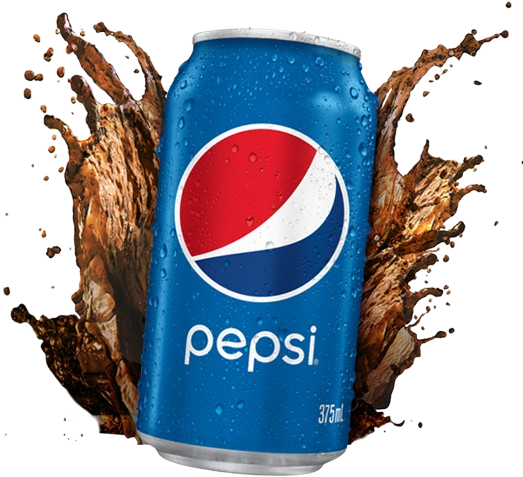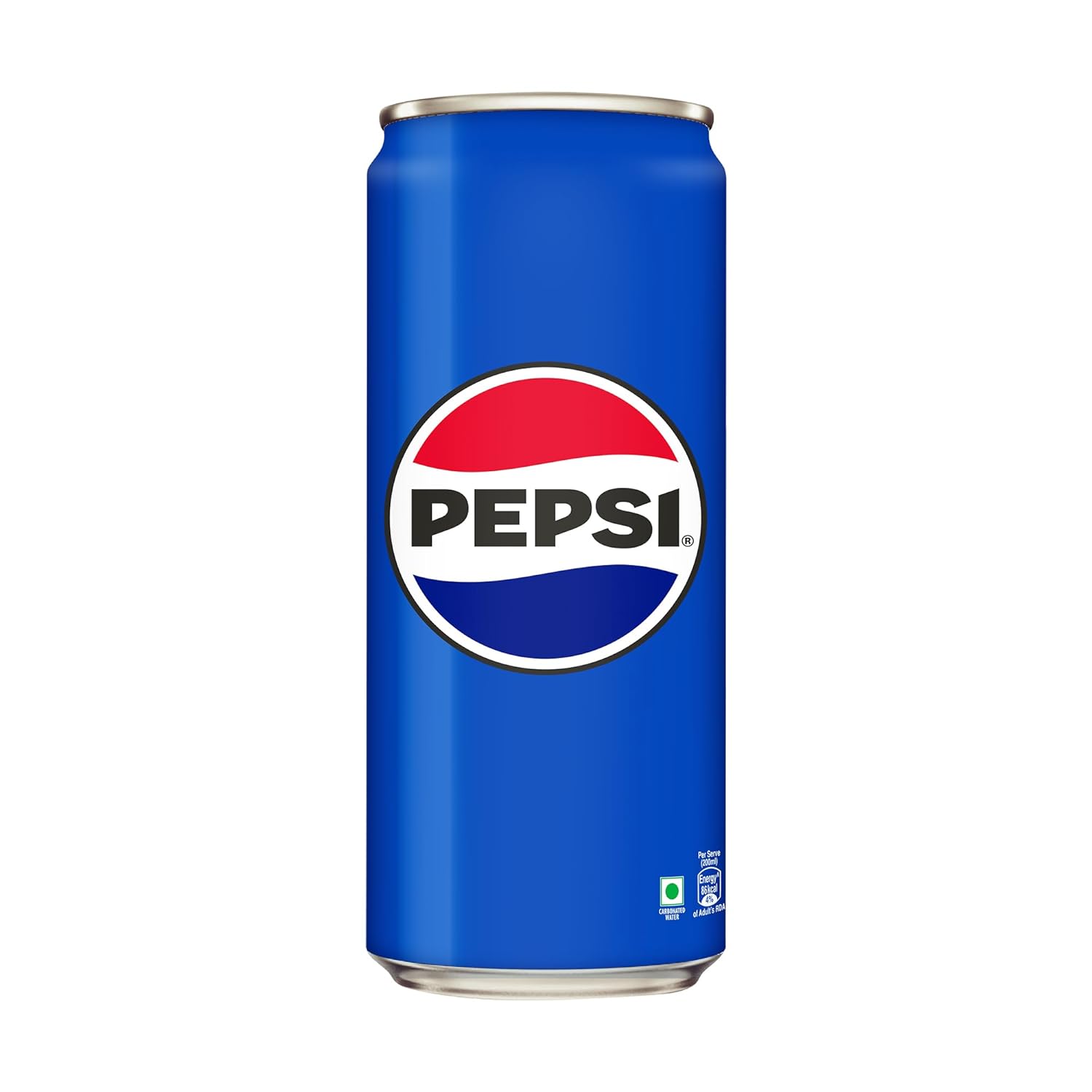Brand Overview
Brand:
Pepsi
Parent Company:
PepsiCo
Core Categories:
Beverages
Taglines Over the Years:
- Yehi Hai Right Choice, Baby!
- Dil Maange More
- Oh Yes Abhi!
- Har Ghoont Mein Swag
Market Context at Launch
India in the Late 1980s
- India had not yet liberalized; foreign brands had restricted entry.
- The soft drink market was dominated by domestic brands (e.g., Campa Cola, Thums Up).
- There was a hunger for Western brands and lifestyle products, especially among urban youth.
- Entered via a tripartite joint venture with Voltas and Punjab Agro.
- Launched under the name Lehar Pepsi, to comply with FDI regulations.
- Pitched as a "refreshing youth brand", introducing global cola culture to India.
Marketing Mix (4Ps)
 Product Strategy
Product Strategy
Core Product
- A sweet, citrusy cola drink.
- Packaged in glass bottles initially, then moved to PET bottles, cans, and fountain dispensers.
- Pepsi Black (zero sugar variant)
- Limited edition bottles for the IPL/World Cup/celebrities
- Promotional packs tied to movies, music, and cricket
- Positioned as more fun and youthful than Thums Up's macho image.
- Taste preferred by younger consumers looking for a “Westernized” flavor.
 Pricing Strategy
Pricing Strategy
- Launched with competitive pricing to challenge Thums Up and Campa.
- Offered smaller packs at lower prices (e.g., ₹5, ₹10 bottles) to increase rural and mass-market appeal.
- Periodic discounts, combo offers, and value-packs to drive volumes.
 Promotion Strategy
Promotion Strategy
Pepsi's rise in India is marked by aggressive advertising, celebrity endorsements, and iconic pop culture campaigns.Notable Campaigns1. “Yehi Hai Right Choice, Baby!” (1990s)
- With Remo Fernandes' jingle, this became one of the first pan-India youth slogans.
- Featured Juhi Chawla, Aamir Khan, and Sachin Tendulkar.
- Subversive ambush marketing during the Cricket World Cup (dominated by Coca-Cola).
- Cemented Pepsi's cool, edgy image.
- One of the most iconic Indian slogans ever.
- Merged seamlessly with cricket, youth rebellion, and pop culture.
- Coincidentally echoed by Captain Vikram Batra during the Kargil War, further boosting brand recall.
- Repositioning to connect with instant-gratification Gen Z.
- Introduced new faces: Ranbir Kapoor, MS Dhoni, Priyanka Chopra.
- Aligned Pepsi with India's evolving music and streetwear culture.
- Endorsers: Badshah, Tiger Shroff, and more.
- Shift from sports to hip-hop and self-expression.
 Distribution Strategy
Distribution Strategy
- Leveraged PepsiCo's vast distribution network (modern trade, rural, HoReCa, college canteens).
- Focus on:
- Urban youth hangouts
- Rural push through small SKUs and cold chain expansion
- Event-based sampling (cricket, concerts, IPL, music fests)
- Fountain sales through restaurants and QSR chains (e.g., KFC, Pizza Hut — both owned by PepsiCo in India at one point).
Competitive Landscape
Main Competitors
- Thums Up (Coca-Cola) – India's #1 cola brand with a strong masculine, local positioning.
- Coca-Cola – More family-friendly, less edgy than Pepsi.
- RC Cola, Campa Cola, Big Cola – Value or nostalgia-based brands.
Differentiators for Pepsi
- Youth culture leadership: music, cricket, street-style.
- Innovative, cheeky advertising.
- Strong in North India and metros, relatively weaker in South and rural markets.
Consumer Perception & Emotional Connect
- Perceived as fun, global, youth-first.
- Connected emotionally via:
- Music, cricket, movies
- Messages of freedom, choice, and rebellion
- While it didn't claim “nationalism” (like Thums Up), it captured urban India's aspirational identity.
Related Case Studies
Challenges & Strategic Responses
Challenges
- Failed to dethrone Thums Up despite decades of effort.
- Health consciousness and anti-sugar sentiment hit CSDs hard in the 2010s.
- Cola category's relevance waned among Gen Z — energy drinks, flavored water, and juices gained share.
- Launched Pepsi Black (zero-calorie variant) to tap health-conscious urban youth.
- Pivoted marketing to music culture and individuality rather than only sports.
- Focused on digital-first campaigns and influencer-led storytelling.
- Periodic packaging innovations and celebrity bottles.
Impact & Legacy
- One of India's top soft drink brands by awareness and visibility.
- Despite being No. 2 in market share, Pepsi has often led in pop culture and mindshare.
- Built a long-term emotional association with youth energy, aspiration, and coolness.
- Played a major role in transforming advertising in India—slick, Western-style storytelling, use of music, and satire.
Current Position (as of 2025)
- Among top 3 cola brands in India, after Thums Up and Coca-Cola.
- Particularly strong in urban India and northern states.
- Large presence in organized retail, foodservice, and quick-service restaurants.
- New focus areas:
- Pepsi Black,
- Sugar reduction,
- Digital influencer marketing,
- Regional language campaigns.
Key Learnings
- Culture-first branding can help create a distinct identity—even in a crowded, commoditized market.
- Long-term celebrity associations and youth-led slogans build lasting equity.
- A challenger brand (vs Thums Up) can dominate mindshare by being bold, cheeky, and irreverent.
- Category headwinds (like health consciousness) require product innovation and narrative shifts.
- Ambush marketing, when done well, can shape a brand's edginess and identity.
Summary
Pepsi's India journey has been a story of bold marketing, youthful swagger, and cultural sync. While it never overtook Thums Up in market share, it redefined how a brand could embody an attitude, become a pop-culture partner, and stand for more than just a beverage. As India evolves, Pepsi continues to reinvent its message for newer generations while staying true to its core of energy, fun, and individuality.







